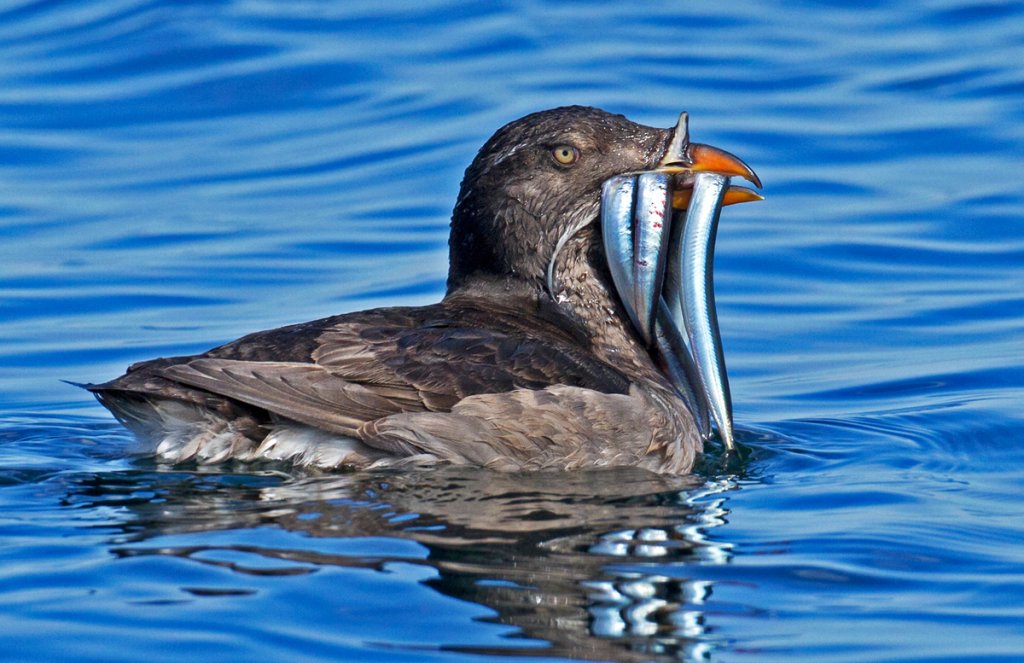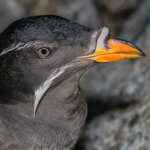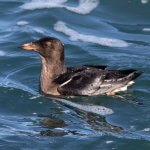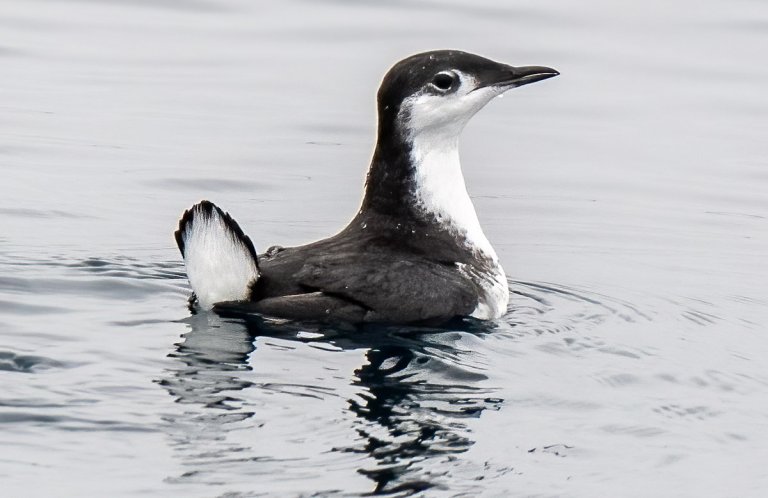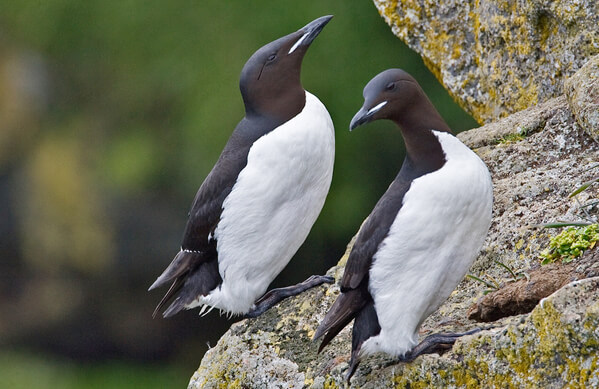About the Rhinoceros Auklet
The Rhinoceros Auklet is the largest of North America's auklet species, the size of (and closely related to) Tufted and Atlantic Puffins. This stout seabird has a dark gray back shading to white on the belly and a large, yellow-orange bill. In breeding plumage, it also has two white plumes on its face and a short whitish “horn” that extends from the base of its upper bill. This odd-looking ornament gives this bird its common name, plus nicknames such as the Rhino Auklet, Horn-billed Puffin, and Unicorn Puffin.
Like a puffin's colorful bill sheath, the Rhinoceros Auklet's horn sheds at the end of each breeding season.
Glowing Attraction
The Rhinoceros Auklet's “horn,” which is the same size in breeding males and females, has been found to be fluorescent to varying degrees under ultraviolet light. Since this species is most active during twilight and just before sunrise, scientists believe that this fluorescence may serve as a signaling device to potential mates.
Songs and Sounds
Rhinoceros Auklet nesting colonies can be noisy places at night, when these birds sound off with a variety of low mooing calls, plus growling, braying, and groaning noises. Most calling occurs within groups or between displaying birds; vocalizations can also be heard between mated pairs and young inside nest burrows. Listen here.
Breeding and Feeding
Nocturnal Noshes
The Rhinoceros Auklet nests on offshore islands throughout the North Pacific, selecting a nest site on sloping ground, which helps these birds take off more easily. Both sexes use their bills and sharp claws to dig their nesting burrow, which can be up to 12 feet long and ends in a saucer-shaped nest chamber lined with grasses. The burrow is usually sited amid thick vegetation or under forest canopy; if soil is lacking, they will nest in crevices, natural cavities, or caves. The female lays one egg, which both adults take turns incubating. Once the chick hatches, the adults bring bill-loads of fish to feed it each night. These nocturnal feeding visits may be a way to avoid food-stealing or predation by larger, more aggressive gulls and raptors, which are active during the daytime.
Bait Ball Bonanzas
The Rhinoceros Auklet feeds mainly on schooling fish such as sandlance, herring, and anchovies, also taking krill and squid. Like puffins, it can capture fish while holding other fish at back of bill, allowing bird to carry several fish at a time to its chicks. It is the only nocturnal auklet species that carries fish externally; other relatives, such as the Dovekie, carry food in a gular pouch in the throat.
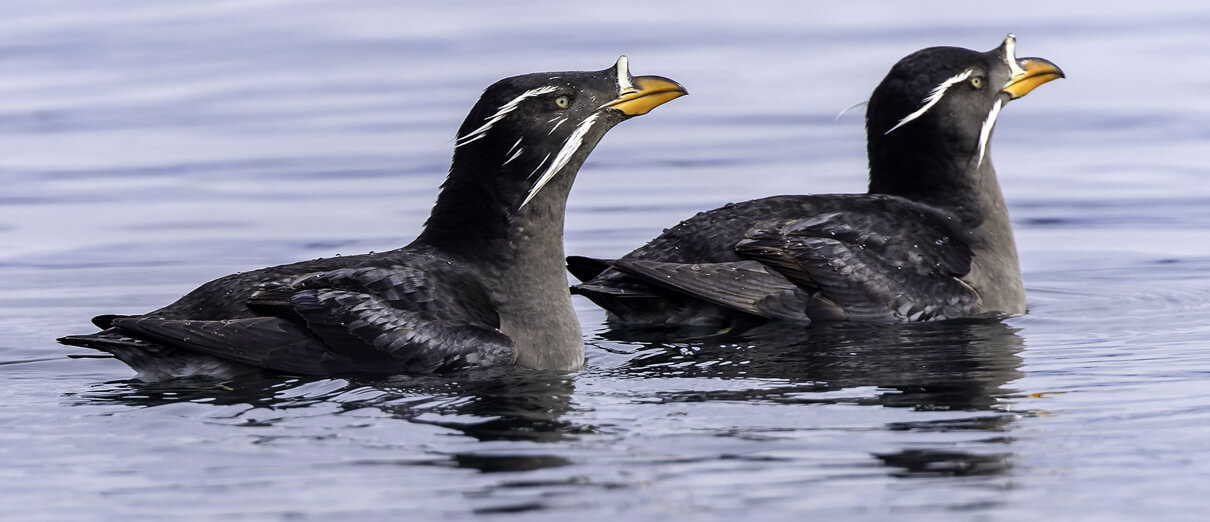
Like relatives ranging from the Guadalupe Murrelet to the Thick-billed Murre, the Rhinoceros Auklet dives underwater to chase down its prey, using its stubby wings to swim to depths of over 100 feet. It captures prey by first driving it toward the surface, then grabbing it with the bill. These auklets sometimes work in groups while hunting, herding dense groups of fish, known as “bait balls,” towards the surface, where they can easily be picked off.
The Rhinoceros Auklet usually forages within ten miles of the shore, where upwellings bring nutrients and fish toward the surface. It often forages in large groups alongside other seabird species such as Black-legged Kittiwake, Pacific Loon, and Heermann's Gull.
Region and Range
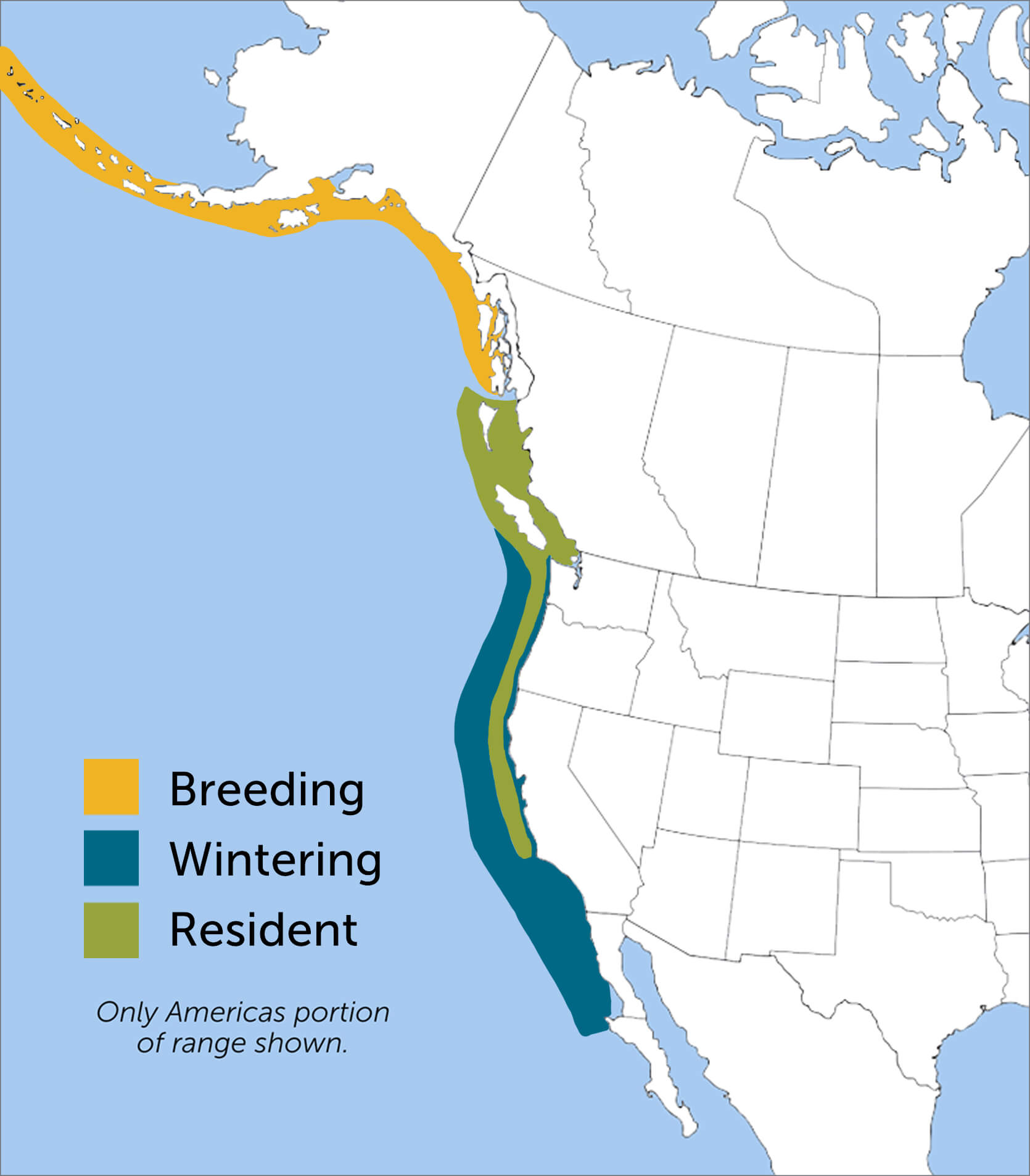
In North America, the Rhinoceros Auklet breeds from California (the Channel Islands) to the Aleutian Islands in Alaska; world-wide, it can be found on the northern islands of Japan, the Korean Peninsula, and Sakhalin Island, Asia. All populations winter at sea.
Conservation

Help support ABC's conservation mission!
Introduced mammals such as raccoons and rats have completely destroyed some Rhinoceros Auklet nesting colonies and caused the birds to abandon others. This bird's near-shore feeding habits make it especially vulnerable to major oil spills and fatal entanglement in fish nets. Climate change and overfishing may decrease fish abundance, leading to high chick mortality.
ABC is working to mitigate many of these threats through its Seabird Program, particularly its fisheries projects, which encourage new technologies, policy changes, and consumer action.
We also support a “Save a Third for Birds” approach that encourages fisheries to consider seabirds when setting annual quotas for fish harvests.
Get Involved
Policies enacted by the U.S. Congress and federal agencies have a huge impact on seabirds. You can help shape these rules for the better by telling lawmakers to prioritize birds and bird-friendly measures. To get started, visit ABC's Action Center.
Plastics pose a deadly threat to seabirds around the world. You can help seabirds by reducing your daily use of plastics. To learn more and get started, visit our Plastics page.
American Bird Conservancy and partners are creating predator-free nest sites for vulnerable seabird species, reducing fishery impacts, and much more. This is a monumental undertaking, requiring the support of many, and you can help by making a gift today.





































